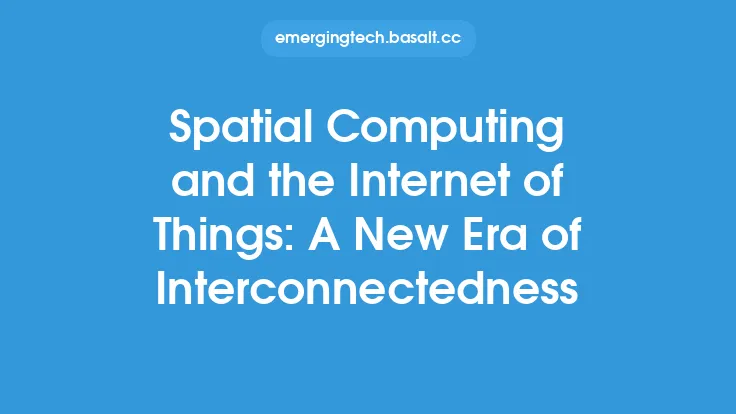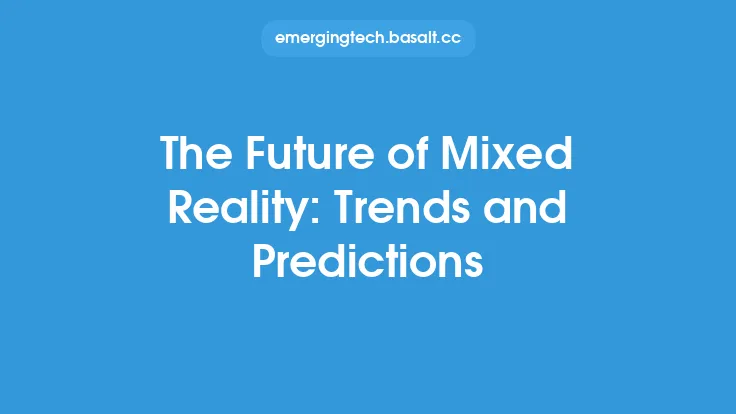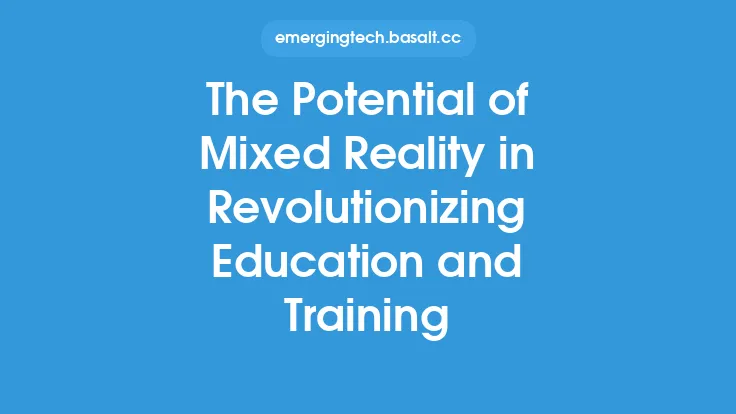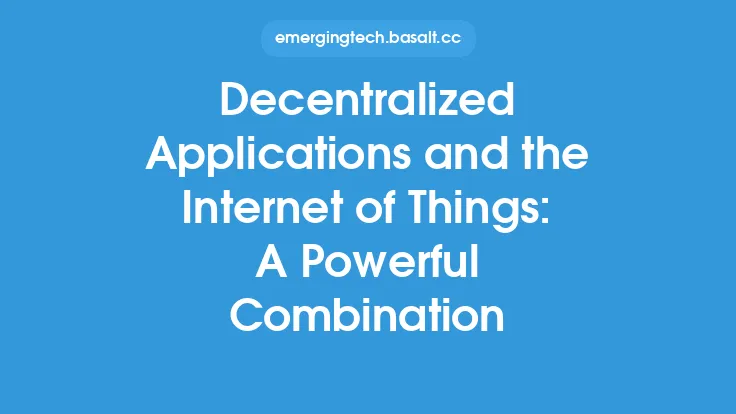The concept of mixed reality (MR) has been gaining significant attention in recent years, and its integration with the Internet of Things (IoT) is poised to revolutionize the way we interact with the physical and digital worlds. MR is a technology that combines the best of both virtual reality (VR) and augmented reality (AR) to create a seamless and immersive experience. By merging the digital and physical environments, MR enables users to interact with virtual objects and information in a more natural and intuitive way.
Introduction to Mixed Reality and IoT
Mixed reality is a multidisciplinary field that draws on expertise from computer science, engineering, and psychology to create interactive and immersive experiences. The integration of MR with IoT enables the creation of smart environments that can sense and respond to user needs. IoT refers to the network of physical devices, vehicles, home appliances, and other items that are embedded with sensors, software, and connectivity, allowing them to collect and exchange data. The convergence of MR and IoT has the potential to transform various aspects of our lives, from entertainment and education to healthcare and industry.
Technical Overview of Mixed Reality and IoT Integration
The integration of MR and IoT requires a range of technologies, including sensors, actuators, and communication protocols. Sensors such as cameras, microphones, and accelerometers are used to capture user input and track their movements. Actuators such as speakers, displays, and haptic feedback devices are used to provide output and create an immersive experience. Communication protocols such as Wi-Fi, Bluetooth, and Zigbee enable devices to exchange data and coordinate their actions. The MR software stack includes components such as tracking, rendering, and interaction management, which work together to create a seamless and interactive experience.
Architectural Framework for Mixed Reality and IoT Integration
The architectural framework for MR and IoT integration typically consists of several layers, including the perception layer, the network layer, and the application layer. The perception layer includes sensors and devices that capture user input and track their movements. The network layer includes communication protocols and infrastructure that enable devices to exchange data. The application layer includes software components that manage interaction, rendering, and tracking. The framework also includes a range of tools and technologies, such as 3D modeling, computer vision, and machine learning, which are used to create and manage MR experiences.
Security and Privacy Considerations for Mixed Reality and IoT Integration
The integration of MR and IoT raises several security and privacy concerns, including data protection, user authentication, and device security. As MR and IoT devices collect and exchange sensitive user data, there is a risk of unauthorized access, tampering, and exploitation. To mitigate these risks, developers and manufacturers must implement robust security measures, such as encryption, secure authentication, and access control. Users must also be aware of the potential risks and take steps to protect their data and privacy, such as using strong passwords, keeping software up to date, and being cautious when sharing personal information.
Real-World Applications of Mixed Reality and IoT Integration
The integration of MR and IoT has a range of real-world applications, from smart homes and cities to healthcare and industry. For example, MR can be used to create interactive and immersive experiences for smart home devices, such as thermostats, lights, and security systems. In healthcare, MR can be used to create personalized and interactive treatment plans, such as virtual therapy sessions and remote patient monitoring. In industry, MR can be used to create interactive and immersive training experiences, such as virtual factory tours and equipment simulations.
Challenges and Limitations of Mixed Reality and IoT Integration
Despite the potential benefits of MR and IoT integration, there are several challenges and limitations that must be addressed. These include technical challenges, such as latency, bandwidth, and device compatibility, as well as non-technical challenges, such as user adoption, cost, and accessibility. Developers and manufacturers must also address issues related to standardization, interoperability, and scalability, to ensure that MR and IoT devices can communicate and coordinate seamlessly. Additionally, there are concerns related to user experience, such as usability, comfort, and safety, which must be carefully considered to ensure that MR and IoT integration is both effective and enjoyable.
Future Directions for Mixed Reality and IoT Integration
The future of MR and IoT integration is exciting and rapidly evolving. As technologies such as 5G, edge computing, and artificial intelligence continue to advance, we can expect to see even more sophisticated and immersive MR experiences. The integration of MR and IoT will also enable new applications and use cases, such as smart cities, intelligent transportation systems, and personalized healthcare. However, to realize the full potential of MR and IoT integration, developers, manufacturers, and users must work together to address the technical, social, and economic challenges that lie ahead. By doing so, we can create a future where MR and IoT integration enhances our lives, improves our productivity, and creates new opportunities for growth and innovation.





